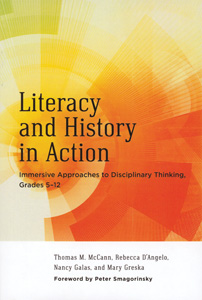LITERACY AND HISTORY IN ACTION
Immersive Approaches to Disciplinary Thinking, Grades 5–12
Paperback
The simulations, which come with step-by-step directions, involve (1) role-playing a town hall in which pre-Revolutionary colonists debate whether or not to remain loyal to England, (2) imagining what Southern troops might have been thinking as they traveled the road home from Appomattox, and (3) conducting a modern legislative hearing to debate making reparations to Native Americans for all that they lost to Manifest Destiny. The simulations engage students in collaborative research, deliberative argumentation (oral and written), and making "Big Picture" assessments of historical issues. A final chapter provides teachers with guidelines for constructing their own simulations.
| Copyright | 2015 |
|---|---|
| Publisher | Teachers College Press |
| Pages | 144 |
| ISBN | 9780807757345 |

